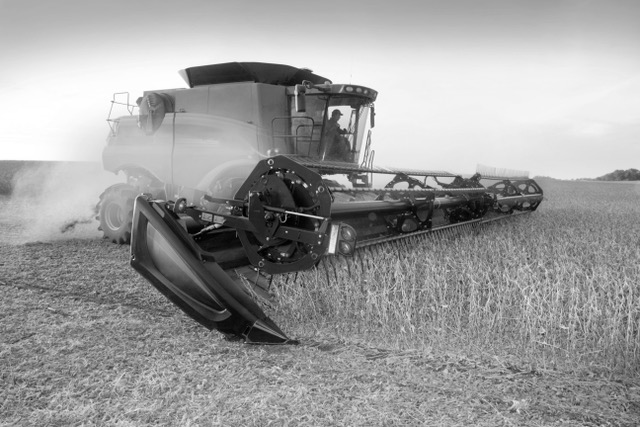Center Feed Belt for Draper Headers Q&A with R&D Engineer, Chad Haugen, Blog Post

Tell me about the center feed belt.
The function of the center feed belt is to move product from the side drapers into the feeder housing of the combine. From the feeder housing, it goes into the combine to get separated and thrashed.
How can you extend the life of the center feed belt?
Off-season maintenance and proper storage are the most important ways to extend the life of your draper header. Keeping the belts away from constant direct UV rays and sunlight helps reduce belt degradation. In the off season, we recommend releasing the belt tension and cleaning the belt and rollers to get rid of any dirt that has accumulated underneath. We also recommend regular maintenance, like greasing the header as required during the harvest season, and maintaining proper belt tension throughout the entire season to optimize belt performance and extend the life.
How do you know if your center feed belt is working at 100%?
Farmers know their bushels per acre and the speed at which they work, so if they see that their ground speed is slower, they know that the system is bogging down. It’s more of a feel for the operators than an exact science. If it’s pulling in fine on the sides, but not getting into the combine, you may need a new center feed belt.
When is the best time to change out your center feed belt?
The tricky thing about center feed belts is there aren't any specific wear indicators to look for. The best time to change the belt is if you notice that the belt is damaged at the splice area or damaged along the edge. You can also see excessive cleat wear or pattern wear, which is a key indicator that it’s time for a new belt. These issues reduce the performance of the center draper. It should also be replaced if you see carcass wear, which means if the field or crop is wearing the rubber off the base carcass. We recommend replacing the belt in the off-season to prevent down-time during harvest.
What are some tips or tricks that are handy to know about the center feed belt?
Every OEM has a different design, so the cleat height, angle or pattern depends on the manufacturer. Soybeans are harvested differently than canola, for example, so the pattern or cleat height will change depending on what you’re harvesting. We offer seed loss kits to OEMs, which have seals and flaps bolted on to header itself on the center deck assembly, so seeds don’t get under the belt or lost on the ground. These kits help keep more crop in the combine and ensure less seed loss. Every time you are losing seed you are losing profit!

